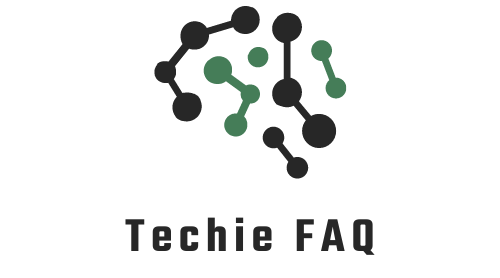Ever tried to visit your favorite website only to find it painfully slow or completely unresponsive? You might’ve encountered the aftermath of a DDoS attack. DDoS, or Distributed Denial of Service, is a cyber assault that aims to overwhelm a website or online service with an enormous amount of traffic, rendering it inaccessible to legitimate users.
In today’s digital landscape, understanding DDoS attacks is crucial for both businesses and individuals. These attacks can disrupt operations, cause financial loss, and damage reputations. So, what exactly are DDoS attacks, and how do they work? Let’s dive into the basics and explore the mechanisms behind these disruptive cyber threats.
What Are DDoS Attacks?
A Distributed Denial-of-Service (DDoS) attack disrupts normal traffic to a web property by overwhelming it with a flood of Internet traffic. Attackers utilize multiple compromised systems, often belonging to unsuspecting users, to generate high traffic volumes. These sources include computers and networked devices like IoT gadgets.
There are key characteristics to note. DDoS attacks involve multiple unique IP addresses or machines, often numbering in the thousands. This makes tracking and shutting them down more difficult. The overwhelming traffic consumes the target’s resources, preventing it from responding to legitimate users. Defending against DDoS attacks is challenging, as distinguishing between attack traffic and legitimate traffic isn’t straightforward.
Essentially, DDoS attacks leverage a large network of compromised devices to execute a coordinated assault, rendering the target service unusable. Understanding this concept is crucial for implementing effective cybersecurity measures.
How Do DDoS Attacks Work?
A DDoS attack disrupts normal web traffic by overwhelming a target with a flood of internet traffic. Multiple components work together to achieve this disruption. First, attackers use botnets, comprising compromised computers or IoT devices infected with malware. These compromised devices, known as “bots” or “zombies,” are controlled remotely.
Attackers instruct each bot in the botnet to send requests to the target server or network. These instructions are sent remotely and direct the bots to target a specific IP address. The aim is to generate a traffic overload. Each bot sends massive amounts of requests to the target’s IP address, overwhelming the server or network. This results in a denial-of-service for legitimate users.
In essence, DDoS attacks exploit the sheer volume of traffic to exhaust the target’s resources, making it impossible to distinguish between genuine and malicious traffic.
Common Types of DDoS Attacks
DDoS attacks come in various forms, each targeting different aspects of a network. Understanding these types is crucial for effective mitigation.
Application Layer Attacks
**Application layer attacks affect specific applications or services by exploiting their vulnerabilities. These attacks aim to exhaust the resources of targeted applications, making them unavailable to users. HTTP floods are a common example, where attackers send numerous HTTP requests to a web server, overwhelming it. Another method is the slowloris attack, in which partial HTTP requests are sent to engage server resources, leaving open connections and consuming server capacity.
Protocol Attacks
Protocol Attacks exploit weaknesses in network protocols to drain network resources. These attacks focus on causing disruptions by overwhelming the target’s protocol-handling capabilities. One example is the DNS flood, where attackers direct a massive volume of DNS requests to the target, exhausting its capacity to respond. Another is the SYN flood, which manipulates the TCP handshake process to bombard the server with connection requests it can’t handle, rendering services unavailable.
Volumetric Attacks
Volumetric Attacks involve flooding the target with excessive data packets to consume its bandwidth and resources. These attacks generally use IoT botnets to generate the traffic. Examples include SYN flood attacks, where attackers send a barrage of SYN packets to initiate half-open connections, ICMP flood attacks, which employ large numbers of ICMP packets to consume network resources, and UDP flood attacks, where large quantities of UDP packets bombard the target, exhausting its processing capacity.
How to Identify and Respond to DDoS Attacks
Understanding how to identify and respond to DDoS attacks is crucial for maintaining network security. This section outlines how to detect these threats and the immediate steps to take.
Detection Techniques
Recognizing a DDoS attack early can mitigate its impact. Here are some key detection techniques:
- Traffic Monitoring: Analyze network traffic patterns. Sudden spikes or abnormal traffic flow often indicate a DDoS attack.
- Anomaly Detection Systems: Use advanced software to identify unusual behavior in network traffic.
- Flow Data Analysis: Implement tools that examine flow data from various network points to detect inconsistencies.
- Rate Limiting: Restrict the rate of incoming requests, flagging frequent requests from single IPs.
Immediate Response Steps
Responding quickly can reduce the damage. Follow these steps:
- Activate DDoS Protection: Use built-in features or dedicated DDoS protection services to filter out malicious traffic.
- Email Alerts: Set up alerts to notify security teams immediately when an attack starts.
- Traffic Diversion: Reroute traffic through scrubbing centers to filter malicious packets.
- Communication: Inform stakeholders and customers about the situation, maintaining transparency.
- Post-attack Analysis: Review logs and data to understand the attack’s origin and improve defenses.
Adopting these measures will enhance your ability to detect and respond to DDoS attacks effectively.
Strategies for Preventing DDoS Attacks
Implementing effective strategies requires an understanding of both network and application security measures.
Network Security Measures
Minimizing the attack surface area, I limit the number of open ports, protocols, and applications. This reduces options for attackers. Ensuring my infrastructure is prepared for scale, I maintain redundant Internet connectivity and scalable server capacity to handle traffic spikes.
- Baseline and Monitor Network Traffic: I establish a baseline for normal traffic patterns to detect anomalies that may indicate a DDoS attack. Continuous monitoring enables early detection and prompt response.
- Deploy DDoS Protection Services: I utilize cloud-based DDoS protection services to filter out malicious traffic before it reaches my network, thus maintaining normal operations.
Application Security Measures
Focusing on application security, I apply multiple layers to thwart potential DDoS threats. Reducing attack vectors at the application layer, I employ stringent input validation and limit concurrent connections.
- Rate Limiting: I implement rate limiting to control the number of requests an IP address can make to an application within a given time frame. This helps prevent abuse by overwhelming the server with excessive requests.
- Web Application Firewalls (WAFs): I deploy WAFs to protect my applications from common web exploits. By filtering and monitoring HTTP/HTTPS requests, WAFs block malicious traffic targeting my application’s vulnerabilities.
Applying these strategies comprehensively helps ensure my systems are protected against DDoS attacks, maintaining their availability for legitimate users.
DDoS Mitigation Techniques
Effective DDoS mitigation techniques are essential to protect network availability and ensure legitimate traffic flows smoothly. Here are some key techniques:
Blackhole Routing
Blackhole routing involves directing malicious traffic into a null route or “black hole,” effectively removing it from the network. While this method immediately stops the attack, it can also inadvertently route legitimate traffic into the black hole, causing additional service disruptions. Therefore, I recommend using blackhole routing cautiously and with specific restriction criteria to minimize collateral damage. This approach offers a quick fix but isn’t a long-term solution due to its non-discriminatory nature.
Rate Limiting
Rate limiting caps the number of requests a server accepts within a specified time frame. This technique ensures that the server isn’t overwhelmed by a sudden surge of traffic. By implementing rate limiting, I can throttle excessive transactions, mitigating the risk of DDoS attacks. For example, allowing only 100 requests per minute from a single IP address can help maintain service availability during an attack. Rate limiting preserves resources and ensures they are available for legitimate users.
Web Application Firewalls
Web Application Firewalls (WAFs) provide a robust defense against DDoS attacks by filtering and monitoring HTTP traffic between a web application and the internet. WAFs can identify and block malicious requests, preventing them from reaching the server. By using a WAF, I can set specific security rules tailored to thwart DDoS attacks, such as blocking certain IP addresses or inspecting request payloads for malicious patterns. This technique significantly enhances application security and reduces the attack surface.
Combining Techniques
Using a combination of these techniques can offer comprehensive protection against DDoS attacks. Implementing blackhole routing and rate limiting in conjunction with Web Application Firewalls creates multiple layers of defense. This strategic approach helps ensure that if one method fails or causes unintended issues, others can compensate, maintaining overall system integrity and availability.
Conclusion
Understanding DDoS attacks and implementing robust defense mechanisms is crucial for maintaining network integrity. By leveraging strategies like Blackhole Routing Rate Limiting and Web Application Firewalls we can effectively mitigate these threats. A multi-layered approach ensures our networks remain resilient against disruptions providing a seamless experience for legitimate users. Staying proactive and informed is key to safeguarding against these evolving cyber threats.





